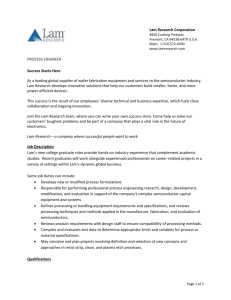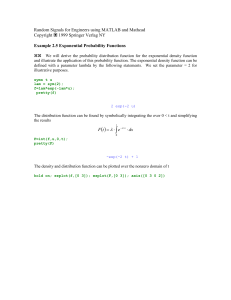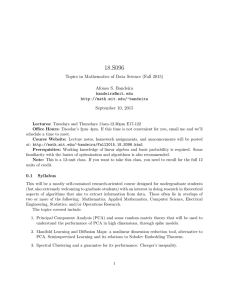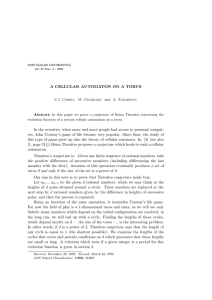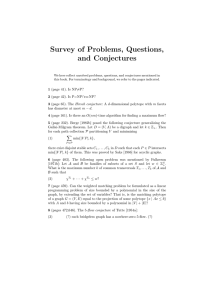Math 4330, Extra Credit, due 2/17
advertisement
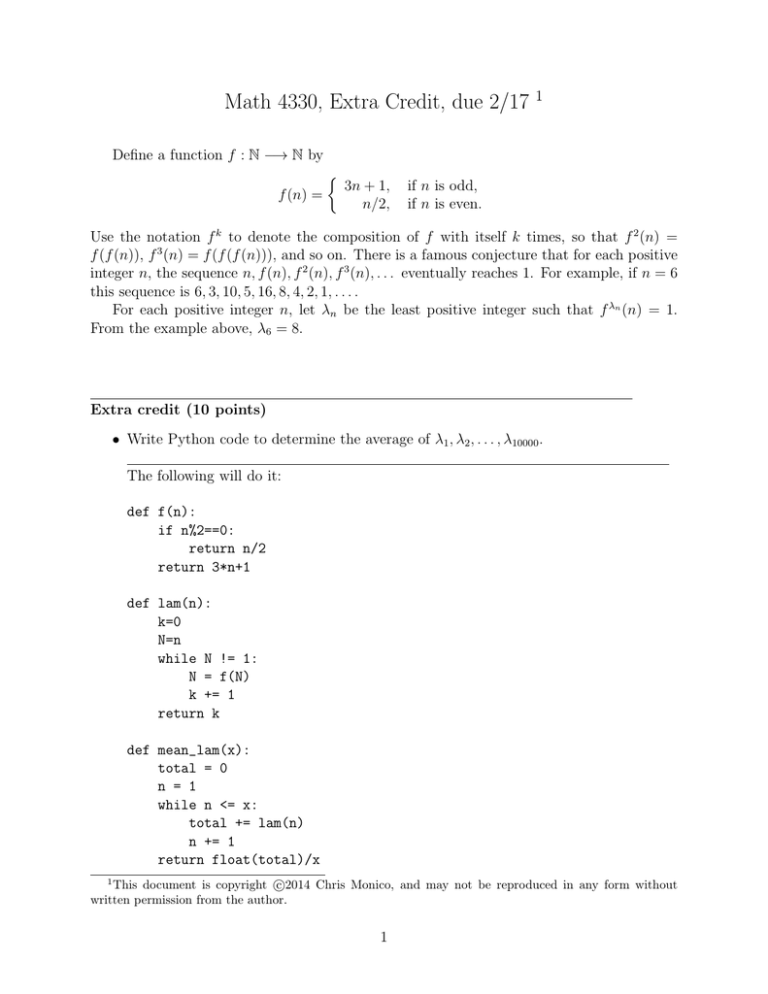
Math 4330, Extra Credit, due 2/17 1 Define a function f : N −→ N by f (n) = 3n + 1, n/2, if n is odd, if n is even. Use the notation f k to denote the composition of f with itself k times, so that f 2 (n) = f (f (n)), f 3 (n) = f (f (f (n))), and so on. There is a famous conjecture that for each positive integer n, the sequence n, f (n), f 2 (n), f 3 (n), . . . eventually reaches 1. For example, if n = 6 this sequence is 6, 3, 10, 5, 16, 8, 4, 2, 1, . . . . For each positive integer n, let λn be the least positive integer such that f λn (n) = 1. From the example above, λ6 = 8. Extra credit (10 points) • Write Python code to determine the average of λ1 , λ2 , . . . , λ10000 . The following will do it: def f(n): if n%2==0: return n/2 return 3*n+1 def lam(n): k=0 N=n while N != 1: N = f(N) k += 1 return k def mean_lam(x): total = 0 n = 1 while n <= x: total += lam(n) n += 1 return float(total)/x 1 c This document is copyright 2014 Chris Monico, and may not be reproduced in any form without written permission from the author. 1 print mean_lam(10000) The average of λ1 , . . . , λ10000 is about 84.97. • Tweak your code to determine the average of λ1 , λ2 , . . . , λ100000 . (You may need to determine several more such averages, so consider writing a function which takes a parameter t and returns the average of λ1 , λ2 , . . . , λt ). This average is about 107.54 • Make a conjecture about the average value of λ1 , λ2 , . . . , λx . (You may need to compute several more averages to make a reasonable conjecture, so feel free to do so). After doing several similar calculations, we find t Average of λ1 , . . . , λt 10 59.54 104 84.97 105 107.54 106 131.43 107 155.27 3 From here, any number of reasonable conjectures (such as logarithmic growth) are possible. One can also work out some conjectures using probabilistic arguments. For example, if we conjecture logarithmic growth, we might add one more column to the table above to check: t 3 10 104 105 106 107 108 αt = Average of λ1 , . . . , λt 59.54 84.97 107.54 131.43 155.27 179.23 αt / log t 8.62 9.23 9.34 9.51 9.63 9.73 Here, there’s not quite enough evidence to suggest purely logarithmic growth - it might be growing just a touch faster, but it’s a reasonable first guess. 2

